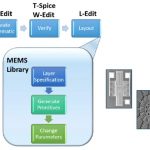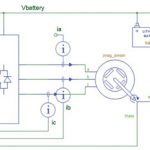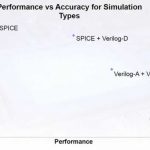We’ve heard recently from several sources that millimeter wave radios, once the exclusive realm of defense and satellite use, are now finding homes in applications such as automotive radar and 5G networks. Therein lies a significant opportunity for digital design: moving frequency conversion and filtering from the analog … Read More
Tag: mixed signal
Synopsys’ New Circuit Simulation Environment Improves Productivity — for Free
When technology advances, complexities increase and data size becomes unmanageable. Fresh thinking and a new environment for automation are needed to provide the required increase in productivity. Specifically in case of circuit simulation of advanced-node analog designs, where precision is paramount and a large number… Read More
Mass customization coming to MEMS?
With the industry abuzz about the Apple purchase of a Maxim Integrated fab as a potential R&D facility for MEMS design, it begs the question: is creating a MEMS device that easy?
MEMS technology is approaching the same fork in the road where digital design encountered LSI four decades earlier. … Read More
Optimizing power for wearables
I was at the Cadence front-end summit this week; good conference with lots of interesting information. I’ll start with a panel on optimizing power for wearables. Panelists were Anthony Hill from TI, Fred Jen from Qualcomm, Leah Clark from Broadcom and Jay Roy from Cadence. Panels are generally most entertaining when the panelists… Read More
Automotive MCU code fault-busting with vHIL
With electronic and software content in vehicles skyrocketing, and the expectations for flawless operation getting larger, the need for system-level verification continues to grow. Last month, we looked at a Synopsys methodology for virtual hardware in the loop, or vHIL… Read More
Can FD-SOI Change the Rule of Game?
It appears so. Why there is so much rush towards FD-SOI in recent days? Before talking about the game, let me reflect a bit on the FD-SOI technology first. The FD-SOI at 28nm claims to be the most power-efficient and lesser cost technology compared to any other technology available at that node. There are many other advantages from… Read More
Verilog-AMS connects T-SPICE and Riviera-PRO
With advances in available IP, mixed signal design has become much easier. Mixed signal verification on the other hand is becoming more complicated. More complexity means more simulation, and in the analog domain, SPICE-based techniques grinding away on transistor models take a lot of precious time. Event-driven methods like… Read More
Cadence Mixed Signal Technology Forum
Yesterday was Cadence’s annual mixed-signal technology forum. I think that there was a definite theme running through many of the presentations, namely that wireless communication of one kind or another is on a sharp rise with more and more devices needing to connect to WiFi, Bluetooth and so on. This was most obvious during… Read More
Designing SmartCar ICs
When I upgraded cars from a 1988 to 1998 Acura it seemed like my car had become much smarter with a security chip in the key, security codes in the radio and a connector for computer diagnosis, however in today’s modern auto there’s a lot more mixed-signal design content. Micronasand Synopsysgot together and hosted … Read More
180nm still a big deal
When I was reading the recent Daniel Payne article “Designing Change Into Semiconductor Techonomics” with commentary on a recent presentation from Aart de Geus of Synopsys, one chart jumped out at me: the most popular process node for new design starts today is 180nm.
Upon mentioning that to a few of my IoT counterparts, they quickly… Read More








